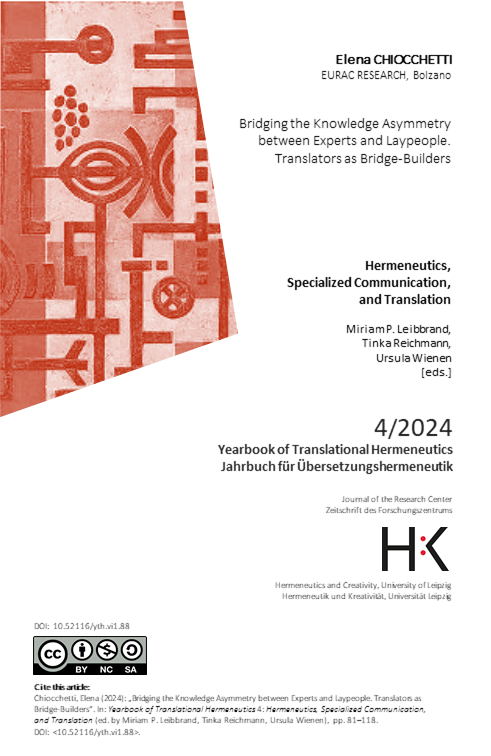Bridging the Knowledge Asymmetry between Experts and Laypeople. Translators as Bridge-Builders
DOI:
https://doi.org/10.52116/yth.vi1.88Keywords:
Expert-lay communication, Communication optimisation, Translator competences, WorkflowAbstract
This paper deals with occupational health and safety, a domain where effective communication between experts and laypeople can contribute to saving lives. Expert-lay communication is hampered by the asymmetric distribution of knowledge between experts and laypeople. Usually, bridging this gap is a task for technical communicators. However, I argue that translators have the necessary professional competences and are often in a good position to support expert-lay communication. They can address all four dimensions identified by Schubert (2007): specialised content, linguistic expression, technical medium and working processes. The key competences are the translators’ linguistic, translational and specialised knowledge. Translators are able to understand the source text and the experts’ intentions on the one hand, and to anticipate the prior knowledge and expectations of the target audience on the other. This allows them to revise texts produced by experts and fine-tune them to the level of knowledge possessed by the intended audience, both interlingually and intralingually. In this way, the workflow to optimise (multilingual) expert-lay communication expands with respect to the workflow in ISO 17100 (2015). In the era of neural machine translation, knowing how to optimise expert-lay communication is an inherently human skill and a potentially added-value service offered by translators.

Downloads
Published
Issue
Section
License
Copyright (c) 2024 Elena Chiocchetti

This work is licensed under a Creative Commons Attribution-NonCommercial-ShareAlike 4.0 International License.
